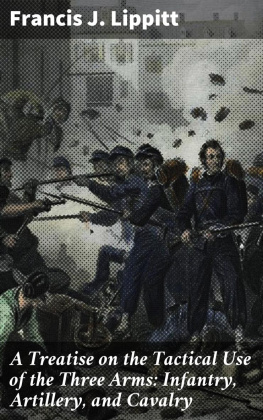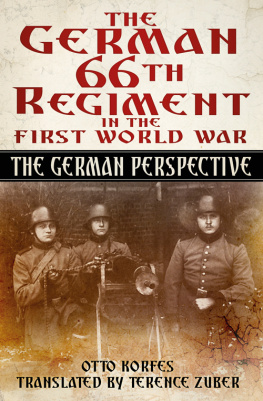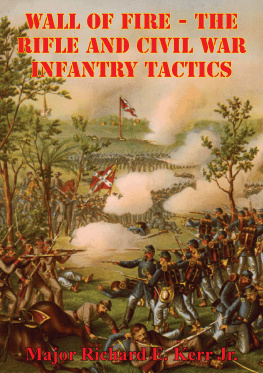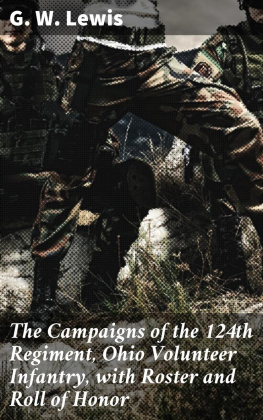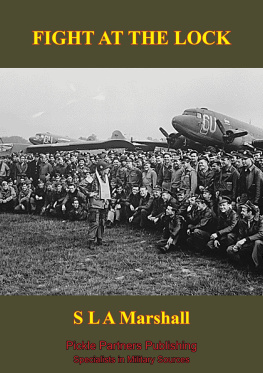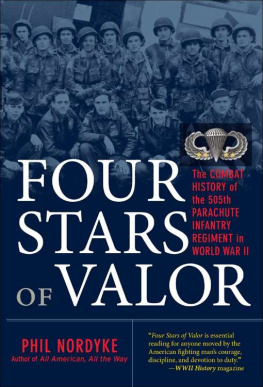
This edition is published by PICKLE PARTNERS PUBLISHINGwww.picklepartnerspublishing.com
To join our mailing list for new titles or for issues with our books picklepublishing@gmail.com
Or on Facebook
Text originally published in 2004 under the same title.
Pickle Partners Publishing 2015, all rights reserved. No part of this publication may be reproduced, stored in a retrieval system or transmitted by any means, electrical, mechanical or otherwise without the written permission of the copyright holder.
Publishers Note
Although in most cases we have retained the Authors original spelling and grammar to authentically reproduce the work of the Author and the original intent of such material, some additional notes and clarifications have been added for the modern readers benefit.
We have also made every effort to include all maps and illustrations of the original edition the limitations of formatting do not allow of including larger maps, we will upload as many of these maps as possible.
FINE CONDUCT UNDER FIRE: THE TACTICAL EFFECTIVENESS OF THE 165TH INFANTRY REGIMENT IN THE FIRST WORLD WAR
by
David G. Fivecoat
TABLE OF CONTENTS
Contents
TABLE OF CONTENTS
ABSTRACT
Recent historiography has almost universally denounced the tactical prowess of the American Expeditionary Force. However, a detailed analysis of the performance of the 42nd Divisions 165th Infantry Regiment tells a surprisingly different story. Despite the challenges of the First World War battlefield, the 165th Infantry Regiment compiled a remarkable record of tactical effectiveness in its 180 days of combat. During its six campaigns, the regiment repeatedly held the line and seized objectives against veteran German units in a variety of situations and under various conditions. At the regimental level, a de facto adoption of trench warfare doctrine enabled the unit to synchronize the combined arms and avoid the doctrinal dysfunction the plagued the majority of the AEF. At the tactical level, the Irish platoons and companies rapidly became adept at using Indian-style or infiltration tactics to advance, seize terrain, and destroy German positions. In addition, superb leadership throughout the regiment and stellar unit cohesion played significant roles in the units superior tactical proficiency. In sum, these four factors enabled the 165th to achieve a level of tactical effectiveness second to none among the non-regular regiments of the AEF and equal to the best units within the German Army.
ACKNOWLEDGMENTS
My year-long saga of crafting Fine Conduct Under Fire would not have been possible without the help of scores of people who supported my research and writing. First and foremost I would like to thank Hallie Fivecoat, my wife, for her steadfast support, for her diligent proofreading, and for maintaining the facade that the tactical effectiveness of the 165th Infantry Regiment was an intriguing topic. Second, Id like to thank my thesis committeeMr. Stephenson, Dr. Challans, and LTC Clayfor their suggestions, prodding, proofreading, and patience. Third, Id like to thank Rick Atkinson for his friendship, encouragement, and introductions to the Great War scholars Mac Coffman and Mitch Yockelson. Finally, Id like to thank several archivists whose assistance improved my research immensely: Genoa Stanford at Fort Benning, Nan Card at the Rutherford B. Hayes Presidential Center, Thomas M. Mooney at the University of Nebraska Archives and Special Collections, and the team at the Military History Institute. Fine Conduct Under Fire was certainly a team effort. In spite of all the help I received, all errors, misinterpretations, and conclusions are my own.
ACRONYMS
AEFAmerican Expeditionary Force
CRCenter of Resistance
CdeG Croix de Guerre
DGDPDirectorate of Graduate Degree Programs
DSCDistinguished Service Cross
DSMDistinguished Service Medal
FAField Artillery
FARField Artillery Regiment
GDPGraduate Degree Programs
GC Groupe de Combat
HEHigh Explosive
IDRInfantry Drill Regulations
IRInfantry Regiment
LoHLegion of Honor
MoHMedal of Honor
NCONon-commissioned Officer
PA Posse dAppui
PCPost of Command
USUnited States
UAUnit of Action
ILLUSTRATIONS
Figure 1: Elements of the 165th Infantry Regiment Advancing Using Indian-Style Tactics.
Figure 2: Father Francis Duffy, the Wellspring of Regimental Strength.
Figure 3: The Remarkable Wild Bill Donovan.
Figure 4: Rainbow Soldiers Clearing a Village during the St. Mihiel Attack.
CHAPTER 1INTRODUCTION
Paul Kennedy once commented that the First World War is not a conflict which...is synonymous with military effectiveness. {1} In fact, there is little in the recent historiography of the US Armys role in the war to rebut this harsh assertion. The American Expeditionary Force (AEF), particularly at the tactical level, has been the criticized for its impotence by post-war scholars who routinely characterized it as flatfooted and mindless in their attacks, tactically backward, and possessing little military imagination. {2} On the surface, a dysfunctional tactical doctrine, an incoherent training strategy, and a chaotic personnel system seemed to create units across the AEF that performed inconsistently, failed to coordinate infantry and artillery in both the offense and defense, and lacked tactical proficiency. {3} In addition, the doctrinal debate between General John J. Pershings concept of open warfare and the advocates of French and British trench warfare doctrine obscured an honest post-war assessment of the tactical effectiveness of units within the AEF.
However, a detailed look at the 165th Infantry Regiments tactical performance in over 180 days in the trenches tells a different talea story that includes the rapid absorption and modification of French doctrine; coordinated combined arms operations on the defense and the offense; and attacks across no mans land that used fire and movement, employed cover and concealment, and overwhelmed German defenses. A veteran described one of the regiments late summer attacks as a case study in decentralized infantry tactics:
The battalion breaks up into companies as it gets nearer the front; and the companies, when they reach the point where they are likely to be under shell-fire, separate into platoons with considerable distance between them. In action, men advance with generous intervals between. When they get close to the enemy the advance is made by frequent rushes, about a fourth of the men in a platoon running forward, while their comrades keep the enemys heads down by their fire, until all of them can get close. In its last stages the warfare of these small groups is more like Indian fighting....To take machine gun nestsI am not speaking of regularly wired and entrenched positions, which is the business of artillery to reduce before the infantry essays themit is often a matter of individual courage and strategy....[O]ften the resistance is overcome...by some daring fellow who works his way across hollows which are barely deep enough to protect him from fire, or up a gully or watercourse, until he is near enough to throw hand grenades. Then it is all over. {4}


